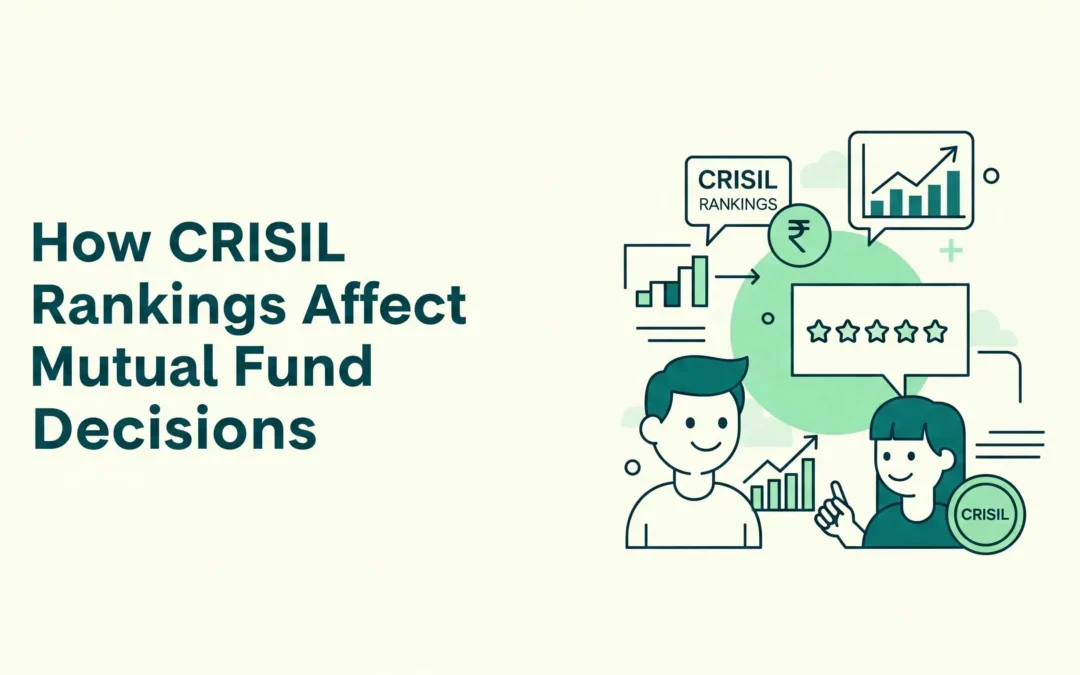CRISIL mutual fund rankings are a tool used to understand the performance and consistency of mutual fund schemes over a period of time. These methods of rankings use both quantitative and qualitative metrics, such as risk-adjusted returns, asset quality, and liquidity.
While CRISIL mutual fund rankings help investors make informed investment decisions, they are not a testimony to an individual’s financial health and are not used by financial institutions to decide whether to approve a loan. Loan approvals are typically based on factors like income, existing liabilities, and credit score, not mutual fund rankings. In contrast, CRISIL credit ratings assess the creditworthiness of issuers and instruments, helping lenders and investors evaluate the risk of default.
Why CRISIL Rankings Matter in Mutual Fund Selection?
Investors in mutual funds frequently depend on professional assessments to manage risks and returns in India’s intricate financial system. The CRISIL mutual fund ranking is an important tool for selecting mutual funds. It offers neutral judgment based on historical performance so that investors make more assured, well-informed choices.
How CRISIL Evaluates Mutual Funds: The Ranking Methodology?
Risk-adjusted returns, portfolio quality, liquidity, and fund management techniques are all measured by CRISIL’s quantitative model, which is based on a number of parameters. The main evaluation criteria are listed below:
| Parameter | Explanation |
| Mean Return Score | Measures average returns adjusted for risk |
| Volatility (Standard Deviation) | Captures the fund’s fluctuation from its average return |
| Portfolio Concentration | Evaluates diversification across sectors and assets |
| Liquidity Score | Assesses how easily the fund can liquidate its holdings without impacting prices |
| Asset Quality (for debt) | Looks at the creditworthiness of debt instruments |
| Fund House Track Record | Considers past performance consistency and the reputation of the fund house across schemes |
Example of Parametric Weight in Debt Categories:
CRISIL provides ranking methodologies to various mutual fund structures, including equity, hybrid, and debt funds. Below is an example specifically on the parametric weights used for debt fund categories.
| Parameters | Dynamic, medium to long, medium duration |
| Mean return (%) | 50 |
| Volatility (%) | 10 |
| Company concentration (%) | 5 |
| Exposure to sensitive sector (%) | 5 |
| Debt – asset quality (%) | 17.5 |
| Debt liquidity (%) | 7.5 |
| Modified duration (%) | 5 |
| Time (years) | 3 |
For a more detailed analysis of the parametric weight structure for different categories, you can refer to the CRISIL official website.
How Investors Use CRISIL Mutual Fund Rankings to Choose Funds?
For both novice and experienced investors, the CRISIL mutual fund rankings are a reliable place to start. By classifying funds according to reliable, risk-adjusted returns and portfolio quality, they act as a fast performance filter that streamlines the fund selection process. Investors usually use these mutual fund rankings as follows:
1. Mutual Fund Screening
CRISIL rankings assist in reducing the list of mutual fund options to the best-performing plans in each category (debt, equity, hybrid, etc.) when investors are presented with hundreds of options.
For instance, a new investor seeking a balanced fund might filter options by choosing schemes with a CRISIL Mutual Fund Rank of 1 or 2, which indicate the top 10% and next 20% of performers within that category.
2. Comparing Funds That Are Similar
Investors frequently compare two or more funds in the same category, such as two large-cap equity funds, to decide which one gives a better return.
| Fund Name | 3-Year Return (%) | 5-Year Return (%) |
| Axis Bluechip Fund | 13.78% | 16.24% |
| ICICI Prudential Bluechip Fund | 21.87% | 24.71% |
3. Fund Selection and Risk Appetite Matching:
- CRISIL mutual fund rankings assist investors in matching their risk tolerance with fund selections.
- For capital protection, conservative investors might select Rank 1 debt funds.
- For higher potential returns with known risk, aggressive investors may look into Rank 1 small-cap equity funds.
4. Monitoring the Performance of Funds Over Time
To keep an eye on fund consistency, experienced investors follow changes in CRISIL rankings.
Strong fund management and the health of the portfolio are demonstrated if a fund routinely holds the top spot or ranks second over the course of several quarters. A drop in ranking may signal performance deterioration or increased risk.
5. Getting recommendations:
Although many investors seek advice from advisors, they still want to feel secure and knowledgeable. CRISIL rankings offer a neutral platform for debating or contesting fund recommendations.
Bottomline
The conclusion can be drawn that CRISIL mutual fund rankings are highly useful for providing clarity and confidence to investors. Investors can avoid low-quality funds, balance returns and stability, and create a mutual fund portfolio that supports their long-term objectives by knowing what these rankings actually mean.
CRISIL rankings provide a methodical place to start for a novice. For experienced investors, they serve as a performance checkpoint to refine portfolios. These mutual fund rankings enable investors to make confident, well-informed, and goal-aligned mutual fund choices when paired with their individual financial objectives, risk tolerance, and appropriate research.
Written by: Tanya Kumari


